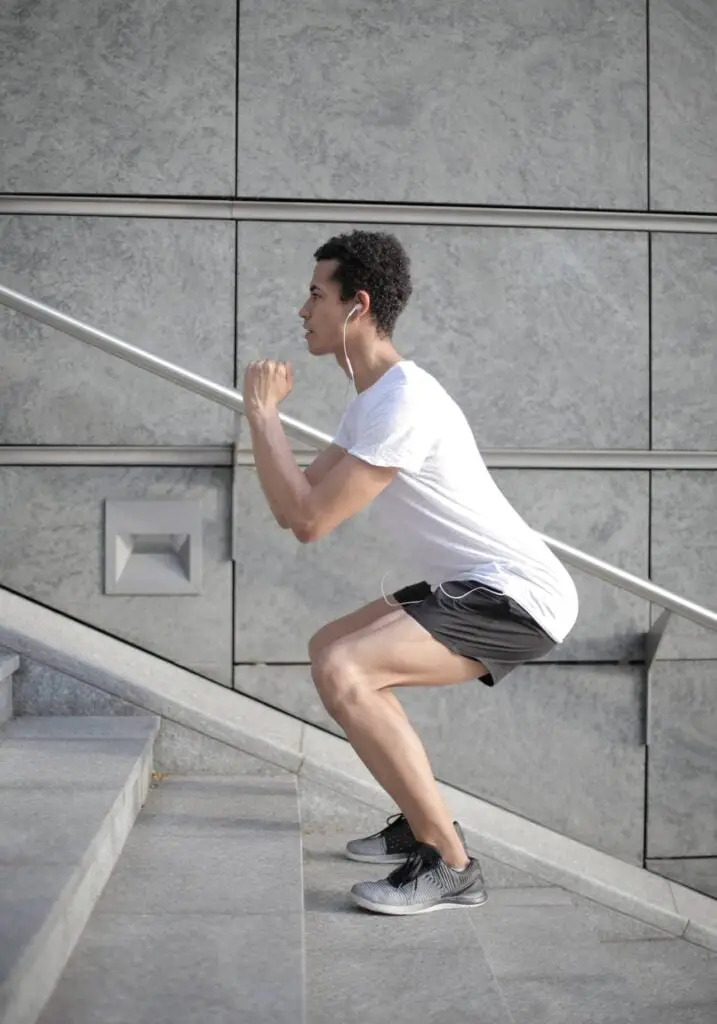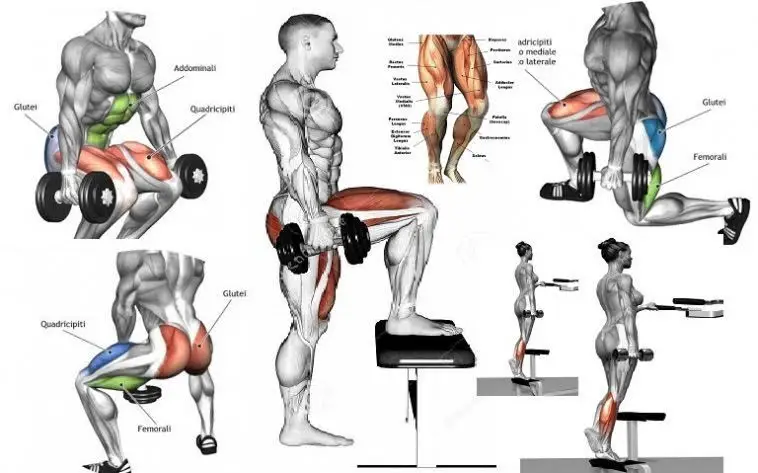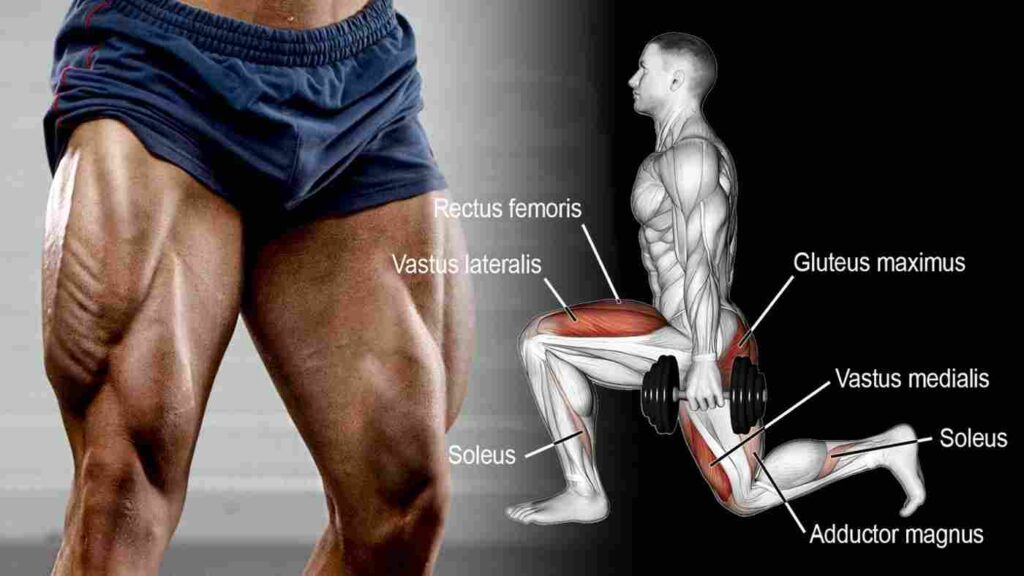In this article, we’ll explore the topics; How training legs increase testosterone, The definition and functions of testosterone, The importance of testosterone for muscle growth, strength, and overall health, and other important topics.
Leg training refers to exercises that target the muscles of the legs, including the quadriceps, hamstrings, glutes, and calves. These muscles are some of the largest and most powerful in the body, and training them can lead to a number of benefits, including increased strength, power, and endurance, improved athletic performance, and better overall health and fitness. Leg training can be done using a variety of exercises, including squats, lunges, deadlifts, leg presses, calf raises, and others.
It is important to use proper form and technique when performing leg exercises to avoid injury and maximize the effectiveness of your training. Whether you are an athlete looking to improve your performance, a fitness enthusiast seeking to get in shape, or simply someone looking to build strong, powerful legs, leg training can be a valuable part of your workout routine.
How Training Legs Increase Testosterone?
Training legs can increase testosterone levels in a number of ways.

First, leg exercises like squats, lunges, and deadlifts involve large muscle groups, such as the quadriceps, hamstrings, and glutes. These large muscle groups require more energy and effort to work, which in turn stimulates the body to produce more testosterone. Testosterone is an anabolic hormone that supports muscle growth and repair, so the body naturally produces more of it when large muscles are being worked.
Second, heavy resistance training has been shown to increase testosterone levels in the body. When you lift heavy weights, your muscles are put under a lot of stress, which triggers a response in the body to produce more testosterone to support muscle growth and repair. This is especially true for compound exercises like squats and deadlifts, which require multiple muscle groups and joints to work together. These exercises require a high level of effort and can stimulate a greater release of testosterone than isolated exercises like leg extensions or curls.
Third, leg training can increase overall muscle mass, which is positively correlated with higher testosterone levels. The more muscle mass you have, the more testosterone your body will produce to support that muscle growth. So, by training your legs, you can increase overall muscle mass and support higher levels of testosterone production.
In summary, leg training can increase testosterone levels in several ways, including stimulating the production of testosterone in the body, using large muscle groups in leg exercises, heavy resistance training, and increasing overall muscle mass. By incorporating leg exercises into your workout routine, you can support muscle growth and development while also boosting testosterone levels.
3 Leg Exercises That Are Often Done Incorrectly?
There are several leg exercises that are commonly done incorrectly, which can lead to injury and decreased effectiveness. Here are a few examples:
Squats
One common mistake when performing squats is not maintaining proper form, which can put excessive stress on the knees and lower back. Common errors include allowing the knees to collapse inward, leaning too far forward, and rounding the back. To perform a squat correctly, keep your feet hip-width apart, your back straight, and your knees in line with your toes. Lower your hips back and down as if you are sitting in a chair, and keep your weight on your heels as you push back up to a standing position.
Lunges
Another leg exercise that is often done incorrectly is lunges. The most common mistake is allowing the knee to extend too far past the toes, which can cause strain on the knee joint. To perform a lunge correctly, step forward with one foot and lower your back knee down towards the ground. Make sure your front knee is directly above your ankle, and your back knee is hovering just above the ground.
Deadlifts
Deadlifts are an excellent exercise for building lower body strength, but they can also be dangerous if done incorrectly. One common mistake is rounding the back, which can lead to injury. To perform a deadlift correctly, start with your feet hip-width apart and your toes pointing forward. Hinge at the hips and push your butt back as you lower your torso towards the ground, keeping your back straight. Keep your knees slightly bent and your weight in your heels. Lift the weight back up by squeezing your glutes and driving your hips forward.
Remember to always start with lighter weights and focus on proper form before increasing the weight. It’s also a good idea to work with a trainer or coach to ensure you’re performing exercises correctly and safely.
Definition and functions of testosterone

Testosterone is a hormone primarily produced in the testicles in men and ovaries in women, although small amounts are also produced by the adrenal glands. It is classified as an androgen hormone and is responsible for the development and maintenance of male sex characteristics, such as facial hair, deep voice, and muscle mass.
In addition to its role in male development, testosterone also plays a crucial role in various bodily functions, including:
- Muscle growth and strength: Testosterone stimulates the production of muscle protein and promotes muscle growth, leading to increased strength and physical performance.
- Bone density: Testosterone helps maintain bone density and strength, reducing the risk of fractures and osteoporosis.
- Red blood cell production: Testosterone stimulates the production of red blood cells, which carry oxygen to the body’s tissues and organs.
- Sexual health and function: Testosterone plays a crucial role in sexual development and function, including the production of sperm and the maintenance of libido.
- Mood and cognition: Testosterone has been linked to improved mood, cognitive function, and overall well-being.
Overall, testosterone is a critical hormone that contributes to numerous aspects of physical and mental health in both men and women.
importance of testosterone for muscle growth, strength, and overall health
Testosterone is an essential hormone for muscle growth, strength, and overall health. It is a key factor in the development of lean body mass and is critical for maintaining muscle mass and strength throughout life.
When testosterone levels are low, it can lead to muscle loss, weakness, and a decline in physical performance. In contrast, higher levels of testosterone have been linked to increased muscle mass, strength, and endurance, as well as improved athletic performance.
In addition to its role in muscle growth and strength, testosterone is also important for overall health. Low levels of testosterone have been associated with various health conditions, including osteoporosis, diabetes, and cardiovascular disease. Testosterone also plays a crucial role in cognitive function, mood regulation, and sexual health and function.
In summary, testosterone is an essential hormone that is critical for muscle growth, strength, and overall health. Maintaining optimal levels of testosterone through exercise, nutrition, and lifestyle choices can help improve physical performance, reduce the risk of health problems, and enhance overall well-being.
Relation between growth hormone and testosterone
There is a close link between growth hormone (GH) and testosterone, as both hormones are involved in muscle growth and development.
GH is produced by the pituitary gland and plays a critical role in regulating growth and metabolism in the body. Like testosterone, GH is essential for muscle growth and repair, as it stimulates the production of muscle protein and promotes muscle cell division.
Research has shown that GH and testosterone levels are closely linked, with GH having a stimulatory effect on testosterone production. GH stimulates the testes in men to produce more testosterone, while in women, GH stimulates the ovaries to produce more estrogen, which can indirectly affect testosterone levels.
In addition, both GH and testosterone levels are influenced by exercise and nutrition. Intense resistance training, such as leg training, has been shown to increase both GH and testosterone levels, leading to greater muscle growth and strength gains.
In summary, there is a close link between GH and testosterone, with both hormones playing a critical role in muscle growth and development. Increasing GH and testosterone levels through exercise and nutrition can help promote muscle growth, improve athletic performance, and enhance overall health and well-being.
Exercises and Techniques to Boost Testosterone

There are specific exercises and techniques that can help boost testosterone levels in the body. Here are some of them:
- Compound exercises: Compound exercises are multi-joint movements that work for several muscle groups simultaneously, such as squats, deadlifts, and bench presses. These exercises are more demanding on the body, leading to increased testosterone production.
- Heavy lifting: Lifting heavy weights can also help boost testosterone levels, as the body responds to the stress of heavy lifting by releasing more testosterone. However, it is important to use proper form and technique to avoid injury.
- High-intensity training: High-intensity interval training (HIIT) and other forms of high-intensity training have been shown to increase testosterone levels in the body. This type of training involves short bursts of intense exercise followed by periods of rest or low-intensity exercise.
- Progressive overload: Progressive overload involves gradually increasing the weight, reps, or sets of an exercise over time. This progressive increase in workload can help stimulate testosterone production and lead to greater muscle growth and strength gains.
- Volume training: Volume training involves performing a high number of sets and reps per exercise, which can also help stimulate testosterone production. This type of training is often used by bodybuilders and other athletes looking to maximize muscle growth and strength.
- Rest and recovery: Adequate rest and recovery time is essential for optimal testosterone production. Getting enough sleep, managing stress, and allowing sufficient time between workouts can help maximize testosterone levels and promote muscle growth and recovery.
In summary, incorporating compound exercises, heavy lifting, high-intensity training, progressive overload, and volume training into your workout routine, along with adequate rest and recovery time, can help boost testosterone levels and promote muscle growth and strength gains. However, it is important to consult with a healthcare provider or certified trainer before starting a new exercise program.
Benefits of Increased Testosterone for Athletic Performance and Muscle Growth
Increased testosterone levels can have significant benefits for athletic performance and muscle growth. Here are some of the key benefits:
- Increased muscle mass and strength: Testosterone is essential for building and maintaining muscle mass and strength. It promotes protein synthesis, which is the process by which your body builds muscle tissue in response to exercise. Higher testosterone levels can therefore lead to greater gains in muscle mass and strength.
- Improved energy and endurance: Testosterone can also boost energy and endurance levels by increasing red blood cell production. Red blood cells carry oxygen to the muscles, which is crucial for exercise performance. Higher testosterone levels can therefore help you train harder and longer.
- Faster recovery from workouts: Testosterone can help reduce the time it takes for your muscles to recover after a workout. It does this by increasing the production of growth hormone, which stimulates tissue repair and regeneration.
- Reduced risk of injury: Testosterone can also help strengthen your bones and connective tissues, reducing your risk of injury during exercise.
- Enhanced sexual health and libido: Testosterone plays an important role in sexual health and function in both men and women. Higher testosterone levels can lead to increased libido and sexual function.
Overall, increased testosterone levels can lead to significant improvements in athletic performance and muscle growth. However, it is important to note that testosterone is not the only factor that influences these outcomes, and that individual results may vary based on factors such as age, sex, and training status.
Additional Factors that Affect Testosterone Levels
In addition to exercise, several other factors can affect testosterone levels. Here are some of the key factors:
- Nutrition and diet: A balanced diet that includes sufficient amounts of protein, healthy fats, and micronutrients such as zinc and vitamin D is essential for maintaining healthy testosterone levels. Conversely, diets that are high in processed foods, sugar, and unhealthy fats can lower testosterone levels.
- Sleep and rest: Getting adequate sleep and rest is crucial for maintaining healthy testosterone levels. Sleep deprivation and chronic stress can both lower testosterone levels.
- Stress management: Chronic stress can lead to increased levels of the hormone cortisol, which can lower testosterone levels. Engaging in stress-reducing activities such as meditation, yoga, or deep breathing exercises can help maintain healthy testosterone levels.
- Age and genetics: Testosterone levels naturally decline with age, particularly in men. Additionally, some people may have genetic factors that affect their testosterone levels.
- Medications and health conditions: Certain medications, such as corticosteroids and opioids, can lower testosterone levels. Additionally, health conditions such as obesity, diabetes, and hypothyroidism can all lower testosterone levels.
It is important to note that testosterone levels can vary widely among individuals and may be influenced by a combination of these factors. If you are concerned about your testosterone levels, it is always best to consult with a healthcare provider to determine the underlying cause and appropriate course of action.
Conclusion
In conclusion, testosterone is an important hormone that plays a crucial role in building muscle mass and strength, as well as promoting overall health and well-being in both men and women. Training legs increase testosterone levels in the body due to its intense and demanding nature, as well as its ability to stimulate the release of growth hormone. Other factors such as nutrition, sleep, stress management, age, genetics, and medications can also affect testosterone levels.
Increased testosterone levels can have significant benefits for athletic performance, muscle growth, energy, endurance, and sexual health. However, it is important to note that testosterone is not the only factor that influences these outcomes, and that individual results may vary based on factors such as age, sex, and training status. It is always best to consult with a healthcare provider to determine the underlying cause of any concerns about testosterone levels and appropriate courses of action.

Good day, and welcome to Fitthour. My name is Shubham Vijay, and I am a certified personal trainer and nutrition coach with 6 years of experience in the fitness industry. At Fitthour, we specialize in types of training, such as strength training, cardio, or HIIT, and our mission is to help clients achieve their fitness goals and improve their overall health.




